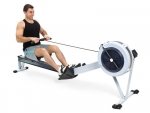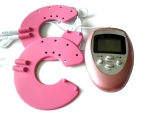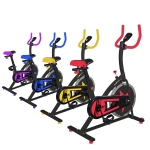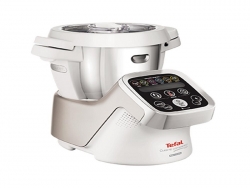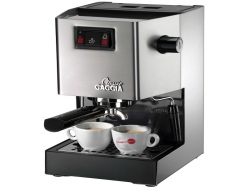US READY - The American's No1 Manufacturer of Headphone
5 Reasons You Should Use Headphones at Work
Listening to music motivates me.
It also drives my work and productivity.

5 Reasons You Should Use Headphones at Work
Sometimes it makes all the difference between a sluggish day and a highly productive one.
My headphones provide me with isolation as well as motivational music.
When I really need to get work done, the headphones go on.
Do you use headphones at work?
Do Headphones Help You Get Things Done?
I wear headphones at work when I need to turn off the distractions and get down to business.
My headphones prevent interruptions while providing a personal work environment.
Headphones can be your ticket to your own personal workspace.
Whether listening to the latest pop music or your favorite movie soundtrack…
Headphones allow you to create your own “Work Zone” amidst the office chaos.
Now, most people will agree that music can be a motivator and drive you.
However, when it comes to the headphones in the workplace, there is often quite a debate.
Some workplaces are not headphone-friendly. Some managers are opposed to their workers using headphones. They claim it is anti-social. Or it prevents them from reaching their employees.
Others, recognize the benefits and encourage workers to “Zone In” to their work.
Some environments are too loud and chaotic to be conducive to concentration and intense work.
Many workers put headphones on for just that reason. To isolate themselves and overcome poorly designed workspaces.
Open floor-plans are often touted for collaboration. But, they are not the best for creative work or deep thought.
So, employees resort to their headphones and music.
Before you do, here are a few tips to consider:
- Ensure Your Employer Is Onboard – Some employers are more headphone friendly than others. Before you put on your headphones, make sure that your boss is OK with it.
- Limit the Volume – Keep your music at a reasonable volume. Not only will your ears be better for it, but your work neighbors won’t be disturbed by your music.
- Be Safe – Whenever wearing headphones, make sure you are safe. It’s never a good idea to wear headphones in an environment where they could impact safety.
Headphones On, Music Up
If your job is acceptable to headphones, then by all means bring your music and create your own personal work environment.
Tuning into your music will perk you up, as well as help you stay on task.
Here are 5 Reasons That Your Should Use Headphones at Work:
Set Expectations That You Are Occupied – When you put your headphones on, you are setting an expectation that you are working or engrossed in deep thought. People will be less inclined to interrupt you when your headphones are on.
Create Your Own Work Zone – If you work in a noisy or busy environment, putting your headphones on can be your ticket your own private “in the ZONE.” Tune into your music and turn off the office chaos soundtrack.
Motivate Yourself – Music can be a great motivator. In addition to isolating you, your music can serve to pump up your energy and mood. Keep your inspirational music close at hand. What’s your power song?
Prevent Distractions/Interruptions – When you are concentrating on a tough task, the last thing you need is to be distracted by the latest hallway chat about politics or sports scores. Let your music eliminate distractions and keep you on task.
Choose Your Own Attitude – Whether your attitude needs a quick pick up, or even a few minutes of calm, let your music set your mood. A few minutes of peaceful music can be a great break from the hustle and bustle of the day.
Pump Up Your Music… and Productivity
Music can be a great motivator.
Headphones can be a great tool for getting your work done.
Let your music drive your productivity.
So, put on the headphones. Turn up the music.
And get some work done today.
See more: USReady
How to Choose Headphones
Forget those cheaply made headphones or earbuds that came with your MP3 player. With the right pair of headphones, you can experience music on a whole other level. Whether you're listening at home or on the go, consider investing in a high quality pair of headphones (or buds) for maximum enjoyment.
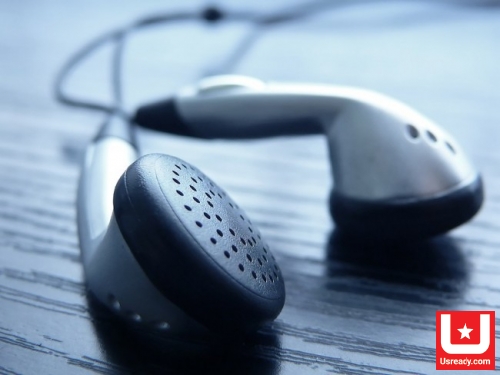
How to Choose Headphones
- Decide between earbuds or headphones.
Earbuds are best for people who are short on space, but still want a way to listen to their music. The higher-quality earbuds, like from Sennheiser or Ultimate Ears, usually come with little cases to put your earbuds in when you're not using them, so they won't get ruined or dirty at the bottom of your bag. If you keep a very small purse and want to keep your iPod Nano and earbuds together in it, or you're a guy with limited pocket space, earbuds are probably a better choice. They're also great if you are on a limited budget, because there's a lot more to choose from and they tend to cost less.
Cheaper earbuds often run into problems like falling out of ears, hurting ears, or simply making dents in them from the cheap plastic. With higher prices (but still low-end in terms of quality) ranging from $25-50, you'll get more comfortable 'buds, and they are well-worth the money you spend. However, if you're an audiophile, you should consider other options. A pair of buds from Sennheiser (like the CX 500, $130), Shure (SE 115, $120), EtyMotic Research (HF5, $150), Sony (XBA-H1, $150), or even Ultimate Ears (minimum Super.fi 4) will be preferable.
Headphones are great if you enjoy putting them around your neck while you're walking from one place to another, or if you just carry your headphones that way. You also tend to get beefier cords and fun options like wireless/bluetooth headphones. The drawback is that good headphones within your budget might be hard to find. They take up more space than earbuds, and the DJ-style headphones take up a ridiculous amount of space if you don't carry around a larger bag.
DJ-style headphones are just that. Huge, bulky, awesome-looking headphones that are reminiscent of what you'd see someone named Double D mix his jams with. The structure lends itself to good sound containment but bad size usage. And a lot of music buffs get them because of the better sound quality and less pressure exuded on the eardrum, resulting in longer listening time and less damage to the eardrum.
Behind-the-neck headphones are exactly that as well, headphones with a connecting band that goes behind the neck instead of over the top of the head. This is recommended for joggers or people who wear hats a lot and also for sunglasses fanatics. Therefore, if you're a girl (or guy) with long hair, and you hate headphones that press your hair down or dislike headphones that irritate your ear piercings, this type would be a good choice. Besides that, there are very few things that separate them from DJ-style or "regular" headphones.
- Remember that you get what you pay for
Generally, more expensive headphones are made with higher quality materials and better engineering, improving the sound quality. $30 headphones will sound good, but not as good as $60 ones. Up in the $80-90 range, you may hear stuff in your music that you've never heard before. $9.99 bargain bin earbuds or headphones may last, at longest, a year, and will not sound great to begin with. So spending at least $20 on them insures you at least get basic music quality. One guideline is to spend $50 on portable headphones and $250 on a pair for a home stereo. Another thing you get with quality is durability. There are probably people out there with headphones from the 70's and 80's that still work because they're made well, and made to last. When you get a brand name you aren't just paying for the name sometimes; you're paying for the trusted quality.
- Evaluate the headphones' sound isolation.
This refers to how well they keep music in and block outside noise. Nothing is more annoying than having to turn up your volume to drown out the sound of the bus. There's also the fact that if you're rather deaf, enjoy turning your music up loud, and/or use it to drown out background noise and the headphones are very open, you'll end up giving everyone around you something to gossip about. Sound isolation will also keep you from having to waste precious battery life or turn up the volume to hear properly.
Earbuds and in-ear headphones tend to be better at sound isolation, due to the seal they provide in your ear; and the same with (huge) DJ-style headphones that create a little sealed environment around the ear.
When buying over-the-ear stereo headphones, notice if they are open-backed or closed-backed. Open headphones tend to sound more natural and not distorted, but people will hear your music and you'll hear the environment around you. They're recommended for home and tend to be more comfortable. Closed headphones isolate noise better and sound more like the music is in your head, not in the environment. They tend to be less comfortable and have some reverberation from sound waves bouncing off of the closed, plastic back. Some people like closed-backed for the booming bass sound and isolation, while some prefer open-backed for the natural and precise sound.
- Investigate the frequency range
A wider frequency range means you can hear more from the music; large ranges such 10 Hz to 25,000 Hz will often be recommended - anything within that range will be fine.
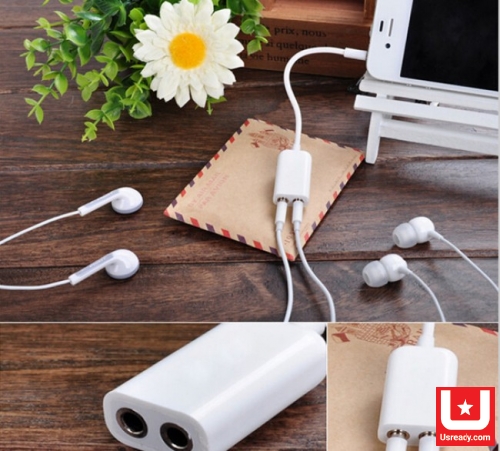
Investigate the frequency range
More importantly, notice the sound curve, frequency response curve, sound signature, whatever you want to call it. If the low end is higher on the line graph, there will be more bass. This does not mean that the bass will be more precise or better. For example, Beats headphones tend to be very bass boosted, yet the bass is commonly described as muddy and boomy with no precision.
Typically, most headphones under $100 will have a U curve - meaning the mid-range is cut out. They may sound "fun" and pleasing to the ears at first, but you won't be able to analyze the layers of music easily. Flat response headphones don't favor any range, meaning you'll hear every layer of the music equally. However, the first impression if you're used to U curves is usually "these have no bass" or "they sound boring". Most people just need to grow into that sound signature to enjoy it.
- Don't look for noise-canceling features unless you're willing to shell out the big bucks
Anything less than around $200-250 isn't worth the price. Even if you're the frequent traveler type, noise-canceling, 90% of the time, just isn't worth the money. Some of your music might get canceled out as well, forcing you to turn up the volume. If you really do need noise reduction, however, look for brands like Etymotic, or Bose which have spongy earplugs that fill the ear canal.
A cheap way to cancel background noise might also be to just put over-ear hearing protectors (from the hardware store) over earbuds to cancel out most ambient noise. On the other hand, if you're not overly fussy, you may find lower priced noise-cancelling earbuds or headphones have considerable benefit for reducing background noise in airplanes, cars or public transportation. Panasonic (just one brand of many) makes an acceptable noise-cancelling earbud for just $50.
- Test them out
The best way, really, to know if headphones can go loud enough for you is to test them out. Try on a friend's pair (if they're cool like that) or go to a good electronics store that will let you try on the headphones. Having around $200 in cash handy and going to a store with a 30-day return policy will make the electronics store your unwilling friend while you learn what types of headphones you really want. Out of courtesy, however, always clean the wax out of your ears before trying on any headphones or earbuds!
- Look for the impedance of the headphones
To get the best out of your headphones, you should match the impedance of the headphones to the audio equipment you are using.[1] This is measured in ohms. In reality if you don't this usually means that you will need to turn up the volume slightly compared to a matched pair of headphones.
- Finally, use your ears!
You are the person who is going to be using these headphones day in day out. If a $50 pair of headphones sounds the same as a $1000 pair of headphones, go for the cheaper pair. The sound quality is not going to change just because they are more expensive! The only thing to remember is the overall build quality of the headphones - are they going to last as long? Does it matter if they are that much cheaper?
How To Wear In-Ear Headphones Properly
Despite suffering a now-infamous trip to the emergency room due to a rubber earbud tip getting lodged in my ear canal, I maintain that in-ear headphones offer the best combination of sound quality, portability, and blockage of outside sounds, although I now use the foam tips instead of the rubber ones.
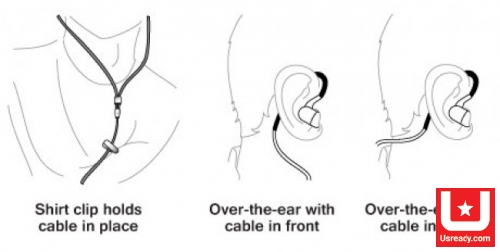
How To Wear In-Ear Headphones Properly
You can keep those white (or whatever color) earbuds that came with your phone if you want. They look good against your outfit. But if you want the best sound quality, you definitely need to upgrade. And in a small form factor, the only way to go, at all, for sure, is with earbuds that form a seal with your ear canal. Otherwise you’ll lose precious bass frequencies, the highs won’t come through cleanly, and outside sounds will mar the experience (unless you want them too — see our suggestions for iPhone or Android). You can even find in-ear headphones in white, if that’s your thing.
There is one big problem with in-ear headphones, however, although its severity varies by model. The problem: The headphone cord. It swings and sways, and every time it hits your body, you’ll hear a thump, due to the headphone’s tight seal with your ear canal, and that gets in the way of the music.
The fix is quite simple, and relies on a part of your anatomy that you carry around everywhere. Yet judging from the people I see walking around New York City, and on the subway, almost nobody knows about it, which is why I’m posting this advice, even though this is primarily a publication about music apps.
The trick is actually quite simple: Use your outer ear as a vibration-dampening mechanism. To do so, simply grasp the earbud, lift it over the back of your ear, and insert it into your ear as usual. When you’re done, it should look like this (unnamed model pictured here due to my own ear being too ugly close-up).
Posted by Uyên Vũ Tags: American Headphone, headphone, The American's No1 Manufacturer, US READY, Wear In-Ear Headphones




